Marcel van Marrewijk's Blog, page 103
November 7, 2017
Expert Selection: The Collaborative Economy
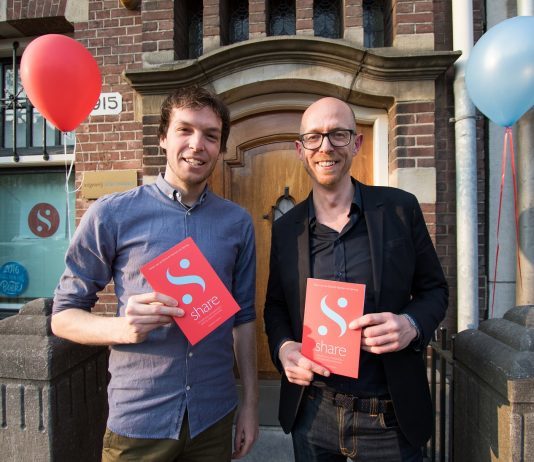 shareNL
shareNLHarmen van Sprang and Pieter van de Glind are leading experts in the collaborative (sharing) economy. They have given many lectures, workshops and strategy sessions, and are asked to participate in discussion panels around the world. In 2013, they co-founded shareNL, the Dutch knowledge and networking platform to further develop the collaborative economy. The growing and dedicated shareNL team works with start-ups, corporations, cities, governments and knowledge institutions from around the world. The company initiated the Amsterdam Sharing City project and co-founded the Sharing Week. At the beginning of 2016, Van Sprang and Van de Glind authored the book Share: opportunities and challenges of the collaborative economy.
Just watched TIS.tv: The Future of Autonomous Vehicles
According to Simone de Bruin ‟Autonomous cars will be our near future, but will it be heaven or hell? Listen to Robin…www.tis.tv
“This video illustrates how we can shape the future of self-driving cars by discussing two possible scenario’s: heaven or hell. Robin Chase, pioneer in the world of the sharing economy, says it’s important to think ahead and make the right choices instead of letting the future ‘happen to us’. This video helps us rethink the ‘wait-and-see-mentality’. Ride sharing promises to be very important for the right implementation of autonomous cars. Real differentiators. It’s time we get used to sharing and make it the norm before self-driving cars are introduced to the large public (suggested by Ananda Groag — shared mobility expert).”
Just watched TIS.tv: Rachel Botsman State of the Sharing Economy
According to Simone de Bruin ‟Rachel Botsman discusses the state of The Sharing Economy and how companies can become…www.tis.tv
“Rachel Botsman is an innovator and expert in the field of the sharing economy. She addresses healthy skepticism and criticism towards the collaborative economy and the future of work. Moreover, Botsman discusses challenging issues that lead to many discussions in the field; whether platform providers (drivers (Uber), hosts (AirBnB), etc.) are being empowered or exploited, how to deal with inequality between value creation and value distribution, and how innovation relates to regulation (suggested by Theresa Thomasson — co-creator and coordinator).”
Just watched TIS.tv: Erstes i-share Symposium: Begrüßung und Keynote von Pieter van de Glind
According to Simone de Bruin ‟[starting at 1:55] Pieter van de Glind talks about the phenomenon which is known as The…www.tis.tv
“In the last couple of years, the collaborative economy has developed at a tremendous speed. Such new economic models provide disruption and change, which makes the collaborative economy movement appear more and more clearly in the media and on the streets, in both positive and negative contexts. In his keynote, Pieter van de Glind not only explains this phenomenon, but also provides us with a little glimpse of the future: what are the challenges and opportunities that lie ahead for all stakeholders involved?”
Just watched TIS.tv: Nilofer Merchant – Be Warned: Copy Silicon Valley and You Will Surely Fail
According to Simone de Bruin ‟Nilofer Merchant warns Europe not to copy the Silicon Valley model, but to come up with…www.tis.tv
“In this talk at Ouishare Fest, renowned author Nilofer Merchant discusses the truth behind the myths of Silicon Valley. She explains how Europe should have its own approach to creating a sharing economy; a more connected and collaborative approach, which to her is the road to success. We can all agree to the fact that big tech firms such as Airbnb and Uber have shown us the way and the potential of the sharing economy. We should be very grateful for that. At the same time, it’s good to be conscious in Europe of the way we implement the sharing economy in our society so it benefits everyone equally. The talk is definitely worth your while as it takes a closer look at the created myths & narratives and acknowledges the fact that women have played an equal part in the rise and further development of the sharing economy (suggested by Samantha van den Bos — sharing economy expert: inclusivity & global development).”
Just watched TIS.tv: Bob Collymore on M-Pesa’s success
According to Simone de Bruin ‟MPesa is a very successful Kenyan mobile money transfer service. This is an interview…www.tis.tv
“Kenya’s M-Pesa counts as the most successful sharing economy service in Africa. As for peer-2-peer money transferring, it would be probably count as the biggest success story in the world! M-Pesa allows people to transfer money by means of a (simple) phone, no fancy smartphone required. It’s a very interesting case study for larger countries in the Global South with poor Internet coverage and limited access to smartphones. This is an interview with M-Pesa’s CEO Bob Collymore on the success of the service (22 million active users!) since its conception in 2007 (suggested by Samantha van den Bos — sharing economy expert: inclusivity & global development).”
The post Expert Selection: The Collaborative Economy appeared first on Seats2meet.
Steiger B is looking for English and German Speakers Managers
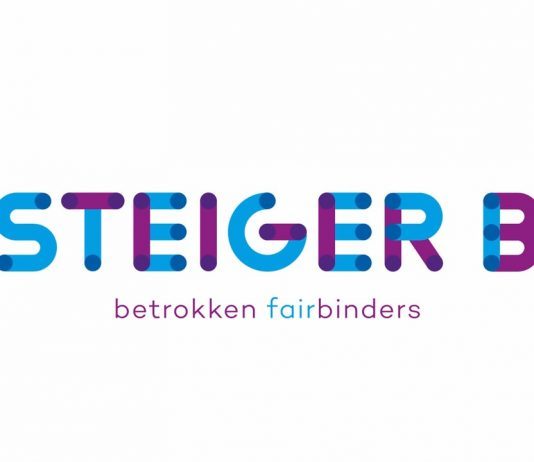
Steiger B is a recruiting company organization for the social sector; housing corporation and childcare. At Steiger B we like to find the right place for every professional. Because we know these sectors from our own experience, we know what’s going on and have a big network. The company is continuously looking for English and German speakers professionals in childcare management. You can explore and apply for the many opportunities here.
The post Steiger B is looking for English and German Speakers Managers appeared first on Seats2meet.
Steiger B is looking for English and German Speakers

Steiger B is a recruiting company organization for the social sector; housing corporation and childcare. At Steiger B we like to find the right place for every professional. Because we know these sectors from our own experience, we know what’s going on and have a big network. The company is continuously looking for English and German speakers professionals in childcare management. You can explore and apply for the many opportunities here.
The post Steiger B is looking for English and German Speakers appeared first on Seats2meet.
November 6, 2017
Vaporwave: Art Born of the Internet
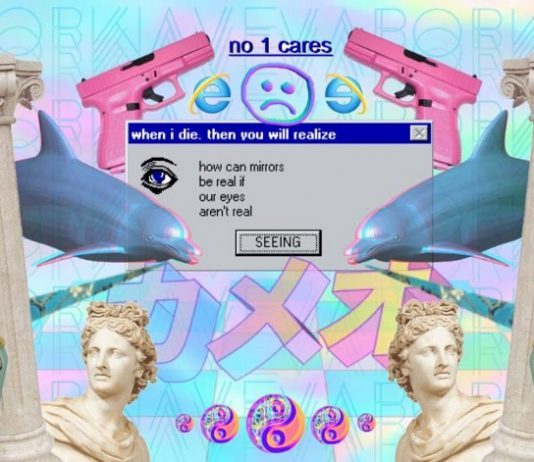
Picture for a moment the internet as a place: a ultra-connected Pangea where you can walk from Tokyo to Buenos Aires in a second. Of course that’s not true; but then again somehow it is. Let’s not forget that the internet is indeed physical — a network of cables, computers and satellites. It’s not conceptual, it’s a material thing. With enough dedication and food poisoning, we could eat the internet.
Now imagine this enormous continent has different places with their own individual cultures. It’s easy to grasp that Brazil and France had different cultural processes and thus generated their languages, imageries and ideals from their specific contexts. The same is true for Wikipedia, Tumblr and World of Warcraft.
Let’s focus our lens a little bit: let’s talk about art.
For most of its existence, the internet-land has imported art from the other earth and sky places. Justin Bieber songs on Youtube, Bosch’s Garden of Earthly Delights on Pinterest, Eric Hobsbawm’s Age of Extremes as a free downloadable pdf — all clearly available on the big interweb halls of art, but none really originated from the internet culture.
For sure some pieces are conceived with their internet gallery in mind or even taking advantage of the web environment special connected grounds. Still, the Mona Lisa was made in Italy and no Louvre appropriation will ever change this.
So where is the art from the internet?
Oh, everywhere. Let’s talk about one manifestation in particular. But first…

you will soon understand where this piece of pure entropy comes from
Where do art-babies come from?
Art movements are born as a cultural response to a bigger social-political-technological environment. The creators involved in this process are living those same societal effects, even if they don’t know each other.
For example, the hippie movement was born in the US as a rejection of the horrors of the Vietnam war efforts, a strong alignment with the civil rightsand women’s rights movements and widespread use of psychoactive drugs. The early artists of the flower power were experiencing those social phenomena before the first song was written.
Easy to understand when you talk about countries, but intra-internet it gets trickier. (Almost) anybody can be (almost) anywhere online, no need for passports nor expensive flights; so your own environment is much more related to your choices. As if you could teleport yourself anywhere on the globe, but you could never be in two places at the same time. By the way, where would you be right now?

hi, we’re contextual
Art can be demanding
Not every art style is easy to enjoy. Some pieces ask for a certain baggage from the spectator — and that is ok. Art should be varied and multiple, even if that means that some percentage of the world’s art is hard to grasp.
Please note here that I’m not talking about understanding, just appreciating. Most people don’t know that the Mona Lisa is the flagship of a revolution in painting technique called sfumato and that the Christ the Redeemer is the first big statue of Jesus with no cross on his back — but not knowing those factors don’t diminish people’s delight. Probably the mythos created around those pieces have done much more for them than the actual technical revolutions they represent.
I’ve experienced first hand the price of art: I needed two years and a half of music university training to really start to enjoy dodecaphonic music. It’s actually a sort of music perception puzzle, only by understanding all the notes and their relations you can start having fun listening to it; but of course only trained musicians can do that. It’s not a genre that proposes processed beauty, it challenges you and that’s pretty cool.
So whenever you go to a museum and just don’t understand a sculpture or you listen to some bizarre song and don’t get it.. well, maybe you’re not ready yet.

if you still think this is a bunch of squares, that’s ok! But you gotta understand that many people see much more
Enter the Vapor
As dodecaphonic music challenges you to listen to it technically, Vaporwave challenges you to enjoy it ironically. It glorifies the stupid and meaningless — and by doing so it shows us blatantly how stupidness and meaninglessness can slip through our attention cracks.
I strongly recommend that you read the rest of this listening to this, because I suddenly feel the energies of Vappy — the God of Vaporwave and Burger King Discount Tickets — invade my body. Oh celestial Walmart meme-creature, command my words!
I am one with the Vapor now. I will be your guide.
Let’s start talking about our thoughtful and handcrafted influenced. What are the most bizarre and meaningless references we can muster? 80s catchy tunes slowed down? Good! But we can go lower… how about obscure 70s japanese funk? Ooooh I can smell instant ramen out-of-date sauce! We’re getting there, but I feel we can find even more low-life tunes.
How about mall elevator music and Windows 95 sound effects?
Oh yah, that’s the shit. That’s what I’m talking about.
But wait, we also need a strong visual style to represent everything we consider good and fair. After all, we’re making art to elevate the human spirit, inspire true virtue and care for other. In that case, let’s just make collages with Nintendo 64 game’s backgrounds, a bunch of Fiji mineral water bottles, some pink dolphins and greek statues.
Yeah, that’s the sort of feeling I’m talking about. Now snort that strawberry milkshake.

thanks for the wisdom, Vappy
Why is it important if it’s a joke?
Vaporwave is a movement of unsatisfied artists who chose to wield sarcasm as their weapon of choice. Instead of arguing and fighting, they spend their time elevating Seinfeld, 90s games and Pepsi as saints just for people to feel how ridiculous this is (I’m serious, there’s an artist called Saint Pepsi and it’s pretty good).
As Adam Neely well describes — it’s a style that should not be analysed by notes and scales; If you do so, you miss the point completely. The beauty, the irony, the appreciation is a little more contextual than that.
Yes, it is indeed a joke that went too far — probably to the bamboozlement of its on originators. Yet, it shows us how new art movement can (and will) be generated directly from the lands of the interwebz. Also, the properties of the web make sure we have the whole story well documented.
In 1917 when Duchamp signed a porcelain urinal and exposed it in a gallery, a lot of people just said “meh” and walked away. I admit that it’s hard to grasp, yet a lot of opportunities of appreciation were just lost by these people. They were witnessing history and they chose to not give a shit.
With new technologies like virtual reality and blockchain promising to become ubiquitous in our lives, we should give the benefit of the doubt to any movement born from those technological landscapes.
Who knows? Macintosh Plus may have changed art history forever. If this sounds ludicrous, I’m going to repeat: Duchamp literally put a urinal in a gallery. Beat that.
If you feel the crush of consumerist society, the sweet smell of a BigMac or just want to learn more about this new genre, you can click here, here and here. Good stuff.
Stay aesthetic, my friends.
https://youtu.be/rTfa-9aCTYg
(this post is a tribute to my friend Alex — aka Sony — who introduced me to the aesthetic way of living and is also part of a really cool band with vaporwave influences)
The post Vaporwave: Art Born of the Internet appeared first on Seats2meet.
The WebSummit starts today and you can watch it live

The tickets are sold out, but the biggest event in tech live streams all its program. Today at 19h30 in the Dutch time you can watch the opening night here. This night will start with Paddy Cosgrove, the initiator of the event and will follow by other speakers as the European Commissioner for Competition Margrethe Vestager, the Secretary-General of the United Nations António Guterres and Prime Minister of Portugal António Costa.
The Web Summit will continue through the next 3 days in Lisbon and we will be there covering everything! So let us know in the comments what is it that you want to know and who you want us to interview and give freelance and entrepreneurship tips! Also don’t be afraid to contact us if you are around. The more the merrier!
The post The WebSummit starts today and you can watch it live appeared first on Seats2meet.
Interview with Tessa Smits – Mixing art with entrepreneurship
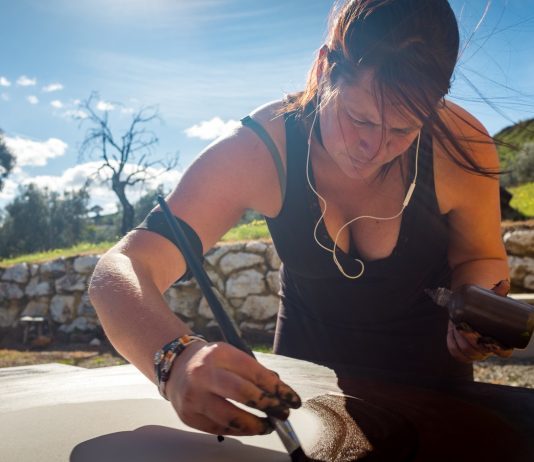
When we think about entrepreneurship we usually think about the traditional jobs. We rarely stop to think that artists are also entrepreneurs. At least that’s the case with me. On November 27th Seats2meet.com completes 10 years of existence and is hosting a festival to celebrate it, as one should. Among several activities, there are art exhibitions, and we interview the artists exposing their work. Here is the story of Tessa Smits, the artist who gives great lessons on being a successful entrepreneur.

Hi Tessa, could you tell us a little bit about yourself?
I’m Tessa Smits, 41 years old, artist and writer. I wasn’t always an artist. I worked as an interim marketer for years and started my own online company. After years of working 24/7 my company went bankrupt, I lost everything; my house, work, money. Instead of feeling depressed I felt relieved. There was no more fear because there was nothing left to lose, I decided to take this opportunity and follow my passion for making art and became a full-time artist. Years later I wrote a book about this period: “Failliet, mooier wordt het niet.”.
You call yourself a ‘failed entrepreneur’ why is that?
I don’t call myself a failed entrepreneur. I did suffer a bankruptcy, a lot of people might think that means I’m a failed entrepreneur. But I disagree on that. I’m still a very enthusiastic entrepreneur and love working independent. I do work in a totally different way than before my bankruptcy. Losing everything brought me a new perspective on life. Instead of following money objectives, I now follow my heart and intuition and money seems to follow automatically.
When was the moment you decided to become an artist?
One day when I was 30 years old, I was looking for something I could really pour my heart into. Out of blue, I decided to go to an art shop and buy some painting materials. From the moment I put the first brush of paint on my canvas, I was hooked. It felt like coming home. Creating something with paint, something I never did before, felt so familiar, I just knew, this is what I’m supposed to do. But it took me almost 8 years and a bankruptcy to have the courage the follow my heart and become a full-time artist.
And how is that going for you so far?
It has been a ride on a rollercoaster, I decided to live with my sister in Spain. This way I had all the time and space to start this new art career. The first year was all about experimenting, trying to discover what my signature would be. It became really clear when I discovered the dot technique. Painting with drops of paint. A very meditative way of creating an artwork. From the moment I used this technique, I fell in love with it. And from that moment on I started to make dot paintings. After 1,5 years, sales also started to grow and now after 3 years, I can actually make a living off my art. This also gave me the opportunity to come back to the Netherlands to find myself my own home again.
Since I’m back (September 2017) it looks like everything is even more in a flow than before. People can actually see my work in real life now and that makes a big difference. In these first months that I’m back, I sold several paintings, got new commissions for artworks and planning on exhibiting for the first time. I’m extremely thankful for how everything is working out right now.


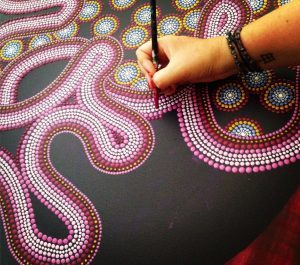
What do you expect for yourself in the next 5 years?
I have no idea, I don’t plan that far ahead. I just follow that what feels good for now. Most important for me is that I keep on doing what I enjoy the most. And I have no idea where that leads me.
What is your advice for people looking to become entrepreneurs?
Follow your heart, guts, instinct, and feelings they are always right. There is a reason you want to start a business. What is your passion or talent? How does it make you feel when you can fully focus on that? That joy, happiness, and longing for freedom is the feeling you want to hold on to. I know it is really hard to let go of the money objective but please try. Running a business with the constant fear of not making it at the end of the month is going to result in bad decisions. I believe that if you really have the courage to stay true to yourself that it will lead to more business than you can imagine.
And what is your advice for people who are struggling with being an entrepreneur?
The struggle is almost always about the dilemma: how do I make enough money. People think they have to compromise. And I know it is really hard to trust that everything is going to be alright if you just follow your heart. But if you don’t try and stay in the grey area, it will be a struggle forever.
Jori questions
Profound question
You can go back in time and give your parents one single piece of advice on how to raise you. What do you tell them?
I would tell them to love me unconditionally, that I’m already perfect the way I am, they only have to love me.
Weird question
You won a contest and now you’ll have your own statue on the moon. What pose would you make for it? Why?
Dancing! The best energy ever and it always helps me to get in touch with myself, feel completely free and inspired to create.
The post Interview with Tessa Smits – Mixing art with entrepreneurship appeared first on Seats2meet.
More About: Smart Cities
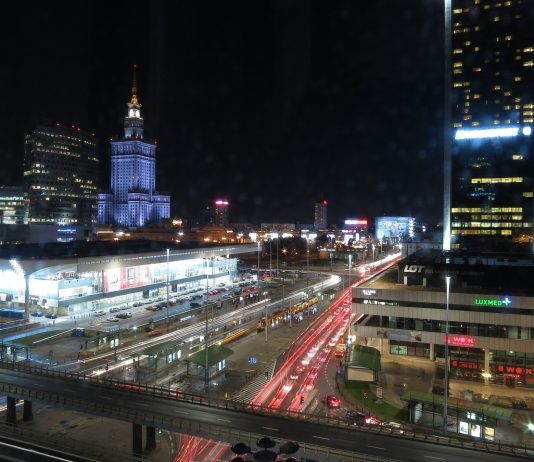
Coming To Your Neighborhood Soon!
Exponential urbanization and continuous digitization are two of the main principles behind the concept ‘Smart Cities’. Smart Cities is a vision on how the Internet of Things (I.o.T) and an integration of ICT-infrastructure will benefit city management and thus its residents. Give smart leaders access to smart technology and cities around the world will become more appealing, sustainable and livable.
Over half of the world’s population lives in urban areas, increasing to two thirds by 2050.
“Cities are important drivers of development and poverty reduction in both urban and rural areas, as they concentrate much of the national economic activity, government, commerce and transportation, and provide crucial links with rural areas, between cities, and across international borders.” (United Nations’ World Urbanization Prospects: The 2014 Revision).
The challenges and opportunities of urban areas
A growing number of residents also means a growing demand for health care, jobs, food, industry, energy and safety, while maintaining the quality of life in the city.
In many of these cases, technology has become more and more important. It has given cities the opportunity to become more efficient and scale up to compete with other cities all over the world. Technology is changing our way of living — it’s innovative character is felt in the way we travel, work, organize…
Introducing Smart Cities
Smart Cities (also known as flexicity, electronic communities and cyberville) is not a fixed term, but a vision on how cities and their infrastructure should operate to meet the needs of its citizens. The concept of Smart Cities envisions how the Internet of Things (I.o.T) and an integration with all the available information and communication technologies can be beneficial for city management and thus its residents. Think of all the community services, such as schools, law enforcement, public transport, hospital and waste management services that can become more efficient when right data is shared among them.
However, Smart Cities don’t pop up out of nowhere, many incremental innovations are required to gradually transform a city into a Smart City.
Technological innovation at the heart of Smart Cities
More often than not, technology and big data are the foundation of a Smart City. So how can technology contribute to city quality?
It can prevent growing cities from a loss of accessibility, by sharing data on available parking spots, traffic congestion and improving public transport;
It can help in city management of lighting, energy, warmth and waste;
It can help law enforcement and with quick access to data and telecommunication services to increase public safety;
The possibilities are endless…!
Smart Cities Challenges
Innovation is often problem solving: solutions are found to current problems. But if this happens on a small local scale, the rest of the nation / world might not benefit from these solutions. That is one of the reasons there have been several Smart City Challenges, which give local initiatives and ideas a center stage. Smart City Challenges are aimed at improving the quality of life by enabling local development.
The Indian Government organized the India Smart City Challenge to inspire municipal officials in developing smart solutions to improve residents’ lives. The best proposals have received funding from the Ministry of Urban Development.
A second Smart City Challenge was initiated by the U.S. Department of Transportation who asked the entrants to write proposals on how smart transportation technologies could benefit the city. The winning city secured 40 million dollar in funding!
Commercialization — change makers
The driving factors behind Smart Cities are often major IT companies who are responsible for the information networks, as well as the public utilities (energy / water) companies. Below you can find a few examples of how these corporations can contribute to Smart Cities:
Microsoft CityNext: How Microsoft CityNext help public services become more efficient
Cisco: How mobility transforms the way people and cities interact
Schneider Electric: The role of Schneider Electric in Smart Cities
IBM: IBM Crime Management Center
Qualcomm Smart Cities: Engineering the Fabric of Citywide Connectivity
Watch more videos on Smart Cities .
The post More About: Smart Cities appeared first on Seats2meet.
November 5, 2017
Klusjeseconomie vs Uitzendbureaus | Coöperatie meets tech | Maatschappij lost het zelf wel op
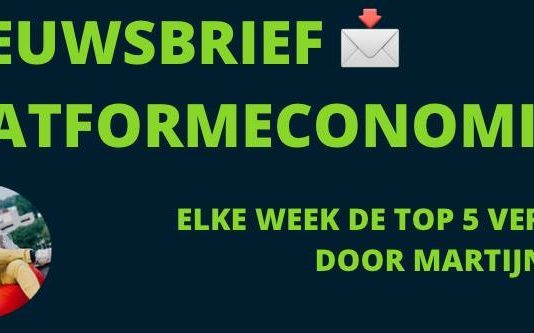
In al het enthousiasme rondom het bekend maken van mijn nieuwe onderzoeken (en parttime aanstelling) bij de Universiteit Utrecht ben ik vorige week helemaal vergeten nog een belangrijke mijlpaal bekend te maken: de release van mijn nieuwe boek ‘Crowdfunding voor Dummies’. De afsluiting van een mooi schrijf- en denkproject met Koen van Vliet. Komende week ben ik in Brussel te vinden bij de bijeenkomst ‘A cooperative vision for the collaborative economy‘ en donderdag vlieg ik naar New York voor ‘The People’s Disruption: Platform Co-ops for Global Challenges‘. In één week een flinke kickstart aan kennis, netwerk en inzichten rondom platform coöperaties: een van de twee onderzoeken waar ik mij de komende 1,5 jaar mee bezig ga houden. Voor deze week heb ik weer 5 mooie stukken gevonden en voorzien van mijn duiding en gedachten. Mooie week!
Platformeconomie top 5
Uber, Lyft, take heart from fellow disrupters and gig responsibly
Bij discussies over nieuwe ontwikkelingen kan het geen kwaad om ook eens terug in de tijd te kijken. Omdat veel discussies niet voor het eerst worden gevoerd en je kunt leren van de fouten en successen van anderen.
Zo ook de discussie rondom arbeid via platformen. In dit stuk:
“Uber, Lyft and Deliveroo are not the first companies to threaten to upend the world of work. As long ago as the 1930s, employment agencies were the bad guys. They were stepping in as intermediaries between companies and workers. The result was a dizzying disruption of the traditional notion of a job for life: triangular employment relationships and temporary jobs. “
“My guys in France in the late 1960s, they were all under threat of getting beaten up by the unions, getting put in prison by the labour legislators,” says Jonas Prising, the chairman and chief executive of ManpowerGroup, one of the world’s biggest employment agencies. “What’s happening to Uber is what happened to our industry, but it’s happening at warp speed.”
“There is no great secret to how these companies came in from the cold. They compromised.”
Compromissen sluiten in combinatie van een ‘warp speed’ groei is de sleutel. Daarnaast zou het goed zijn als de platformen zich ook verenigen om gezamenlijk belangen te verdedigen met een gezamenlijk verhaal en wensenlijstje. Nu zijn het een paar platformen die, vaak vanuit het negatieve, de aandacht naar zich toe trekken, wat niet bevordelijk is voor een constructieve discussie.
Up & Go Is A Worker-Owned Alternative To On-Demand Home Cleaning Service – Fastcompany
Een app waar je een schoonmaker mee kunt boeken. Dat is op zich niet nieuw. Wel nieuw is het wanneer deze app niet als doelgroep schoonmakers, maar kleine schoonmaak coöperaties heeft en de ambitie heeft om zelf ook een coöperatie te worden in eigendom van de klanten (de schoonmaak coöperaties). In New York ga ik hopelijk de oprichters even spreken, maar alvast vooruitlopend een aantal gedachten:
Het is interessant om te zien dat er in NY blijkbaar een ecosysteem van stakeholders is die gezamenlijk dit soort ideeën een boost kunnen geven: advies, funding en het bouwen zelf;
Door te werken via dit platform houden de schoonmakers meer geld over: aan de ene kant vragen en krijgen zij een hoger uurloon en aan de andere kant is de commissie van het platform slechts 5% (tegen minimaal 20% bij andere platformen). Ik vraag mij wel af of de klanten ook echt wel extra voor ‘for good’ willen betalen. Op zich zorgt het verschil in commissie ook al voor een mooi voordeel;
De bestaande cleaner coops zijn niet alleen slecht in tech (vandaar de behoefte aan een speler als Up&Go), maar ook in marketing: “These coops were basically spending up to $1,000 to secure a single repeat customer through fliers, and relying on referrals to grow.”. Hierbij groeit mijn vraag/twijfel of coops zelf moeten investeren in IT en Marketing, of de samenwerking met een externe partij toch niet ene betere keuze is. En we dan juist op zoek moeten naar hoe we zo’n externe partij duurzaam kunnen maken;
Up&Go is nu nog geen coöperatie. Op mijn vraag wat de ambities zijn, kreeg ik terug: “Up & Go is in the process of being organized as a ‘second-level’ co-op, or a co-op of the worker co-ops that use Up & Go.”. Gevaar is natuurlijk wel dat dit mis gaat. Eerder zagen we dat ook bij Juno, een Uber concurrent die de chauffeurs mede-eigenaar wilde maken. Voordat dat zover was, werd de app al voor 200mln door een concurrent overgenomen. Met een berg rechtzaken als gevolg.
Het intappen op bestaande professionals, zeker wanneer deze zijn verenigd in een coöperatie, is voor ieder platform natuurlijk reuze interessant. Je hebt relatief weinig kosten om in één keer een aanzienlijk aantal mensen binnen te halen en je bent verzekerd van een zekere mate van professionaliteit.
Big data meets Big Brother as China moves to rate its citizens | WIRED UK
“The Chinese government plans to launch its Social Credit System in 2020. The aim? To judge the trustworthiness – or otherwise – of its 1.3 billion residents.”
De Chinese overheid is al een tijd bezig met experimenten rondom een rating en reputation systeem voor iedere inwoner van het land. Enerzijds doodeng: het systeem kan een ultiem middel worden om een volk te beheersen, te sturen en te onderdrukken. Dat is ook terug te lezen in het volgende fragment:
“Indeed, Sesame Credit is basically a big data gamified version of the Communist Party’s surveillance methods; the disquieting dang’an. The regime kept a dossier on every individual that tracked political and personal transgressions. A citizen’s dang’an followed them for life, from schools to jobs. People started reporting on friends and even family members, raising suspicion and lowering social trust in China. The same thing will happen with digital dossiers. People will have an incentive to say to their friends and family, “Don’t post that. I don’t want you to hurt your score but I also don’t want you to hurt mine.”
Anderzijds zitten er ook heel interessante elementen aan: “For the majority of Chinese people, they have never had credit scores and so they can’t get credit. “Many people don’t own houses, cars or credit cards in China, so that kind of information isn’t available to measure,” explains Wen Quan, an influential blogger who writes about technology and finance. “The central bank has the financial data from 800 million people, but only 320 million have a traditional credit history.” According to the Chinese Ministry of Commerce, the annual economic loss caused by lack of credit information is more than 600 billion yuan (£68bn).”
Onder de streep blijf ik kritisch kijken naar deze ontwikkeling. Een stap in de goede richting zou kunnen zijn om transparantie in de algoritmen en databronnen te geven. En om zaken als ‘recht om vergeten te worden’ en het afschrijven van reputatie scores (zodat een fout niet je hele leven blijft achtervolgen) in te voeren. Omdat anders een scenario als in ‘The Circle‘ wel erg dichtbij komt.
Community Finance: Initiatieven van onderop vragen condities van bovenaf | Revue
In de nieuwsbrief van Ronald Kleverlaan komen regelmatig interessante berichten voorbij over community funding. Projecten waarbij de buurt zelf controle neemt over (onderdelen van) hun omgeving. In zijn laatste nieuwsbrief kwamen deze twee interessante projecten voorbij:
Community Development Trusts (CDT’s) zijn eigendom van en worden geleid door de lokale gemeenschap. Ze hebben tot doel de lokale gemeenschap duurzaam te versterken en richten zich daarbij op een breed scala van economische, sociale, culturele en ruimtelijke onderwerpen. Ze worden echter wel ondernemend (met business-case) gerund.
Op het eilandje Gigha zijn bewoners daarin nog een stap verder gegaan: zij hebben zich georganiseerd in de Isle of Gigha Heritage Trust en een groot deel van hun eiland voor 4 miljoen pond gekocht. Er ligt een businesscase onder om het geheel renderend te houden. Belangrijk daarin zijn economische activiteiten als het toerisme en de exploitatie van enkele windmolens.
En de rol van de overheid? Enerzijds is het interessant om te bekijken hoe de overheid meer de rol van facilitator in dit soort projecten kan nemen. Door het wegnemen van drempels en het faciliteren met kennis en expertise (wat ook wegnemen van drempels is). Overheid als platform dus. Aan de andere kant moet er ook gewaakt worden voor de balans en gelijkheid in de samenleving wanneer dit soort projecten mainstream gaan worden. Omdat je anders het risico loopt dat de welgestelden de controle en eigenaarschap over de omgeving overnemen en diegenen met minder tot geen middelen eenzaam achter blijven. En de bottom-up beweging de kloof tussen arm en rijk groter maakt.
TransferWise announces whopping $280M investment as early shareholders cash in | TechCrunch
Het gaat goed met Transferwise: een platform waar je internationaal geld kunt overmaken tegen een fractie van de kosten die een bank daarvoor zou rekenen. Deze week hebben zij 280 miljoen opgehaald tegen een waardering van 1.6 miljard. Ik kan mij nog goed herinneren dat ik vijf jaar geleden bij de directeur van een grote Nederlandse bank aan tafel zat en hem over het bedrijf vertelde. Hij had weinig interesse, ondanks dat Richard Branson er toen al 100 miljoen in had gestoken en de oprichters ook aan de wieg hadden gestaan van Skype en PayPall.
Waar veel fintech startups de gevestigde orde nodig heeft om verder te komen, is Transferwise een van de weinigen die autonoom met een enorme snelheid een plek in de markt heeft veroverd. Knap gedaan.
Boek!
Crowdfunding voor Dummies door Martijn Arets, Koen van Vliet (Boek) – Managementboek.nl
Daar is hij dan: Crowdfunding voor Dummies. Voor iedereen die wil weten of crowdfunding voor zijn of haar project geschikt is, wat de voor- en nadelen zijn, welke afwegingen moeten worden gemaakt en hoe je uiteindelijk een succesvolle campagne runt.

Contact
Inspiratie opgedaan en advies of duiding nodig over de platformeconomie of op zoek naar een spreker?
Neem gerust contact op via een reply op deze nieuwsbrief, via mail (martijn@deeleconomieinnederland.nl) of telefoon (06-50244596).
The post Klusjeseconomie vs Uitzendbureaus | Coöperatie meets tech | Maatschappij lost het zelf wel op appeared first on Seats2meet.
November 3, 2017
TIS Picks: 5 Top Mobility Videos
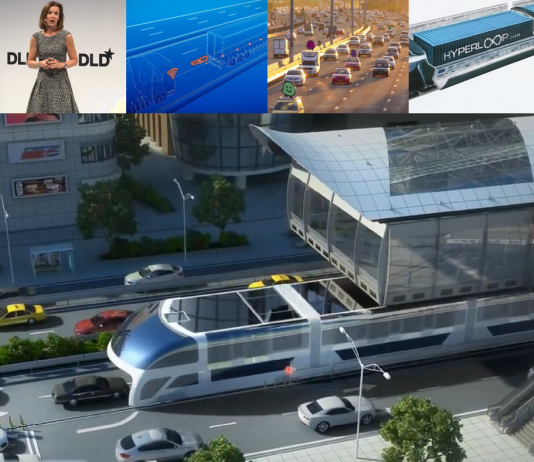
From horse and carriage, diesel engine automobiles, electric cars, to Hyperloop’s transport system, the transport sector has changed a lot over the last 150 years. And so have our surroundings. To cope with the growing number of cars and increasing speed, we had to invest in roads and parking places, seat belts and airbags and in speed bumps and traffic lights. What else will the future bring us? Here is our pick of the 5 best and most breathtaking videos on MOBILITY.
1. Real-time traffic information
Waze is a community-based traffic and navigation application that lets you share real-time data with other drivers. Real-time traffic information such as traffic jams and accidents on the road, while also keeping track of changed routes and road blocks. And another interesting feature, you can see exactly where your Facebook friends are, so you don’t have to text each other OMW (‘on my way’) anymore, but know exactly when they will arrive at your house to pick you up. Hmm…great way to ruin a surprise party though ;):
Just watched TIS.tv: Waze Connected Citizens Program to Build Smarter Cities
According to Johan Schaap ‟The secret of social navigation app Waze: using all data from users for input.”www.tis.tv
2. In single file
By 2025, 70 percent of all freight transport will travel along public roads and place enormous pressure on the European highway infrastructure and the environment. This logistical challenge is being tackled with truck platooning. In truck platooning, trucks slipstream very close behind each other and communicate via wireless vehicle-to-vehicle communication. It optimizes road activity, takes up less space, minimizes traffic jams, leads to less fuel consumption and fewer CO2-emissions:
Just watched TIS.tv: Vision Truck Platooning 2025: Creating Next Generation Mobility
According to Simone de Bruin ‟Truck platooning – creating the next generation mobility; Trucks slipstream closely…www.tis.tv
3. “Electric cars will be the new normal.”
BMW Vice President Hildegard Wortmann kicks off the DLD Summer Conference panel on the future of mobility and is joined by Alejandro Agag, CEO at Formula-E (Formula 1 racing with electric cars). When we look at the bigger picture of the automotive industry, the changes in the next 10 years will be bigger than the changes in the last 30 years. There will be a shift from automotive to automobility. Wortmann and Agag will discuss subjects such as autonomous driving, e-mobility, seamless connectivity and new business models that go with it.
Just watched TIS.tv: Changing Faces of Mobility (Hildegard Wortmann, Alejandro Agag, Tom Goodwin) …
According to Simone de Bruin ‟A panel on the future of mobility at DLD Summer Conference, kicked off by the VP of BMW…www.tis.tv
4. A huge bus sliding smoothly through traffic
This Transit Explore Bus is China’s answer to clogged up streets and traffic jams. According to the Guardian this ‘elevated bus is capable of gliding over the nightmarish mega-jams for which urban China has become notorious.’ A prototype will be deployed in the coastal city of Qinhuangdao later this summer:
Just watched TIS.tv: Incredible way of future transportation-Straddling Bus(3D bus)
According to robert utten ‟Would love to see this one in the road! 3D Straddling bus.”www.tis.tv
5. Taking the tubes
In 2013, SpaceX and Elon Musk announced their concept for a high-speed ground transport system called Hyperloop. It is supposed to cut the commute between San Francisco and Los Angeles down to 30 minutes. A design competition for the Hyperloop pods is well underway, and the pods will be tested in the Summer of 2016:
Just watched TIS.tv: Introduction to Hyperloop Technologies Inc.
According to Erwin Blom ‟The Hyperloop is real! Being build now! “www.tis.tv
The post TIS Picks: 5 Top Mobility Videos appeared first on Seats2meet.
November 2, 2017
Vishwaraj, de Indiase Snelschaatser
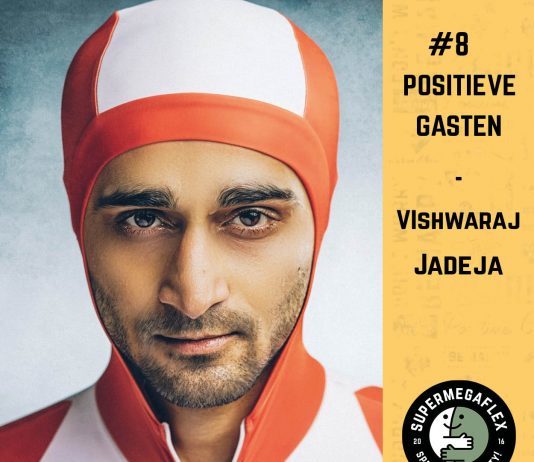
This article was originally published and Supermegaflex.com
Heb jij een grote droom? Zo groot, dat je niet weet waar te beginnen? ‘Zet die eerste stap,’ zegt Vishwaraj. ‘Zet je droom om in een tastbaar doel.’ En hij kan het weten. Bijna tien jaar geleden verliet hij zijn vaderland India om z’n ultieme wens na te jagen: de eerste Indiase snelschaatser worden op de Olympische Spelen.
We hebben zijn verhaal op film gezet voor je. De allereerste positieve gast op video bekijk je hierrr:
You can see all the other Positieve Gasten interviews here.
The post Vishwaraj, de Indiase Snelschaatser appeared first on Seats2meet.



